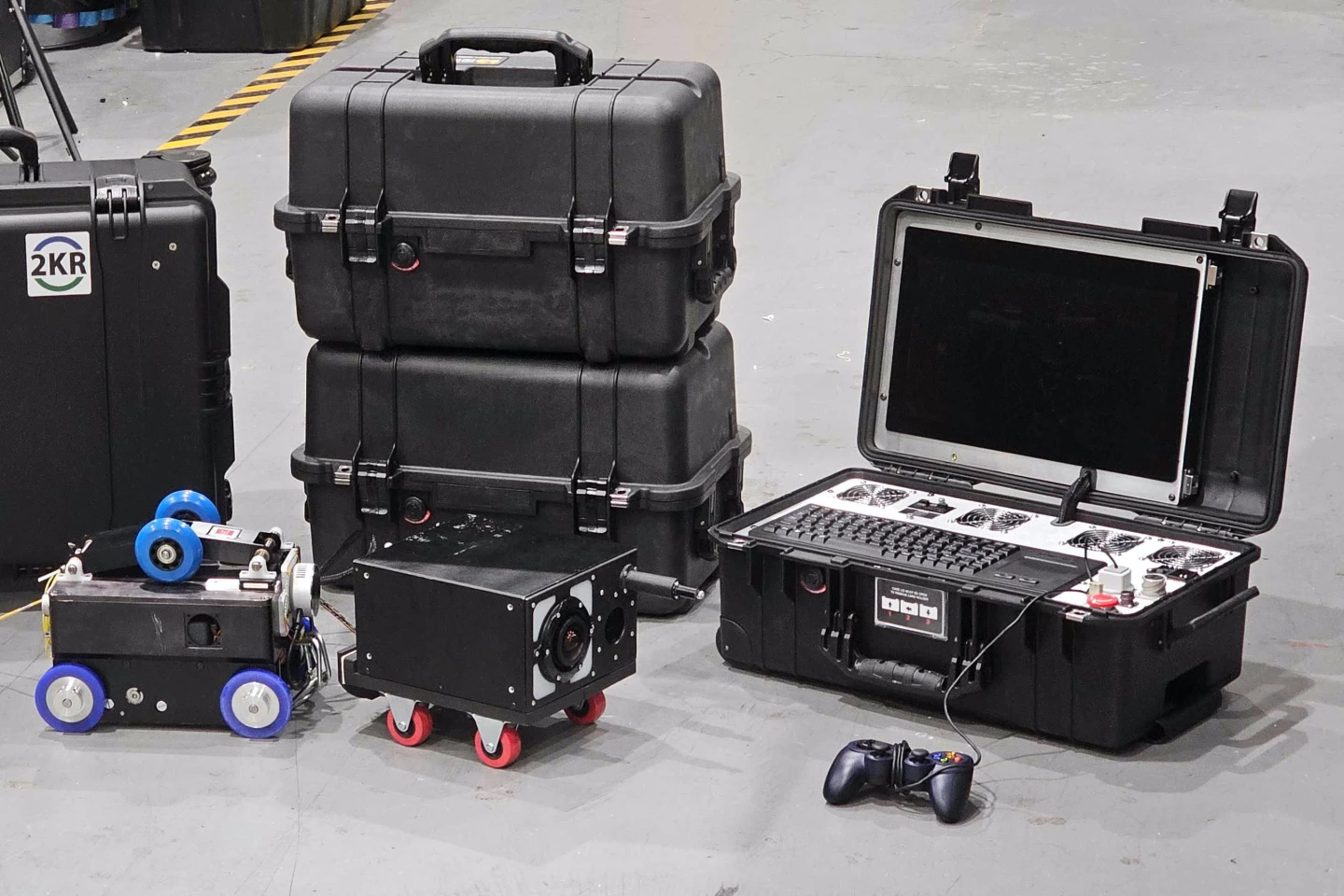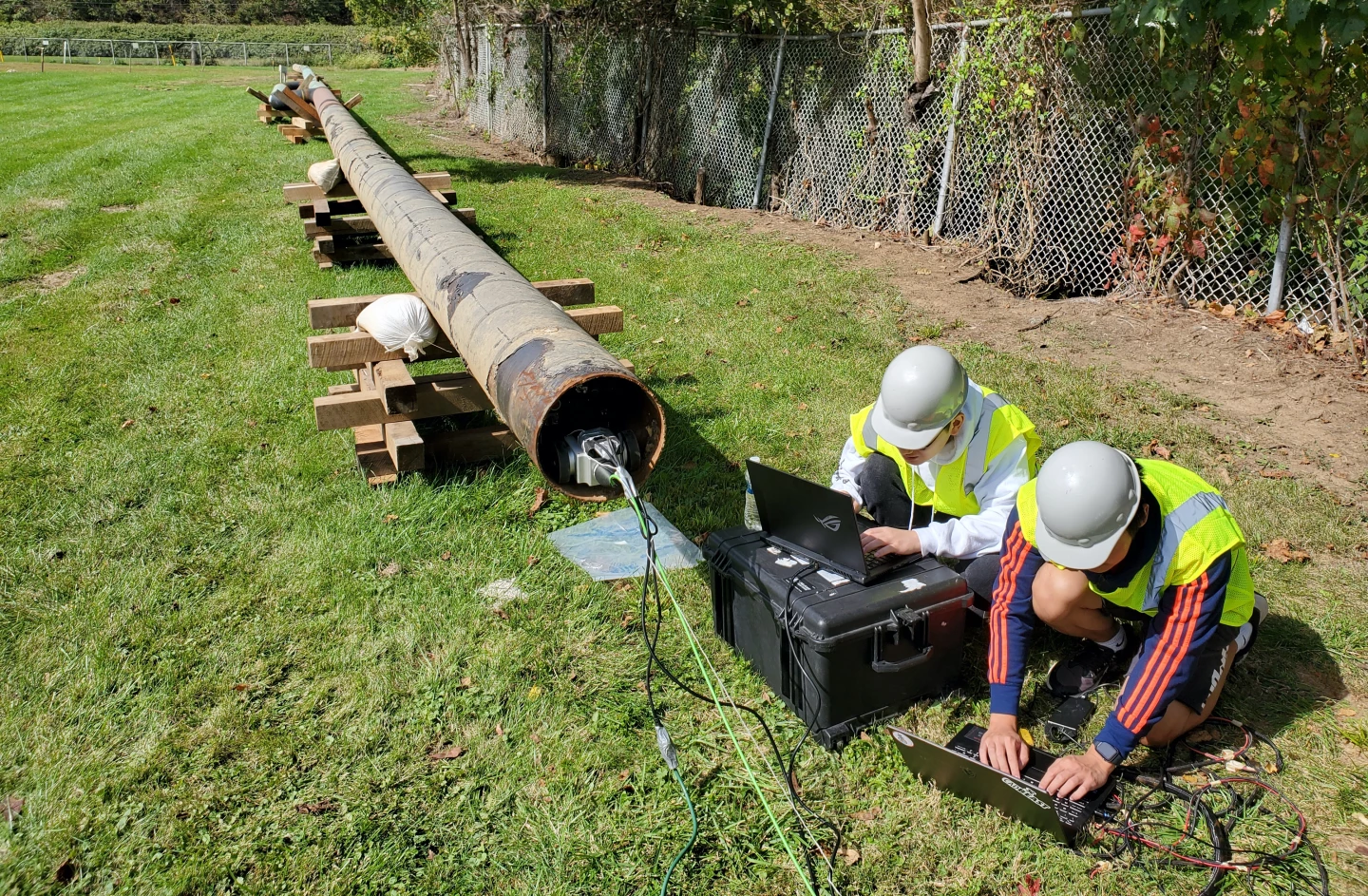Ordinarily, when there's a leak in an underground natural gas pipeline, the affected section of pipe has to be excavated and replaced. Soon, however, a pipe-inspecting and -repairing modular robot may make doing so unnecessary.
The device is currently being developed by scientists at Carnegie Mellon University, led by Prof. Howie Choset and research scientist Lu Li. It's designed to make its way through pipelines, utilizing an umbilical cable for relaying real-time video to (and receiving commands from) a surface-located crew.
At the heart of the robot is its mobility module, which is equipped with four 2-inch wheels on the bottom and another two on top. These six motorized wheels press against the inner wall of the pipeline, providing the traction needed to pull everything else along.
Potentially weighing up to 60 lb (27 kg), that "everything else" includes a battery module; a mapping module which uses an HD optical sensor and a laser to measure and 3D-image the pipeline's inner surface; and a repair module.

In the present setup, the repair module consists of a spinning nozzle which applies a continuous bead of fast-hardening airtight resin onto the wall where needed, in order to seal any cracks or other faults. The crew spots such problems via the output from the mapping module, with a bit of help from an AI image-analysis system.
Other repair modules could potentially be used to perform tasks such as the welding of leaky seams between pipe sections.

The robot can presently inspect about nine miles (14.5 km) of 12-inch (305-mm)-diameter pipe in eight hours, or resin-coat approximately 1.8 miles (3 km) in the same amount of time. It has an umbilical range of 200 feet (61 m), although the scientists hope to eventually boost that figure to two kilometers (1.2 miles). They're also working on a smaller version of the robot, for 6-inch (152-mm) pipes.
The US Department of Energy, which is funding the project, estimates that use of the robot for repairing pipelines from the inside may ultimately be 10 to 20 times cheaper than excavating and replacing them.
The following video shows two views of the robot applying petroleum jelly (standing in for the resin) to the inside of a clear section of pipe.
Source: Carnegie Mellon University






